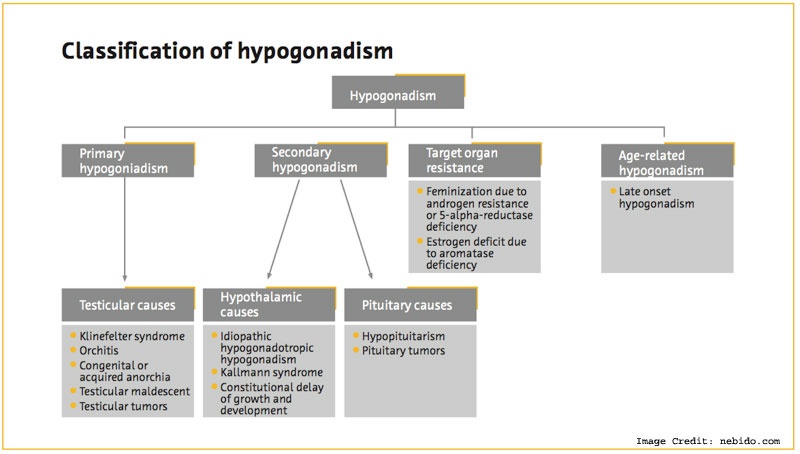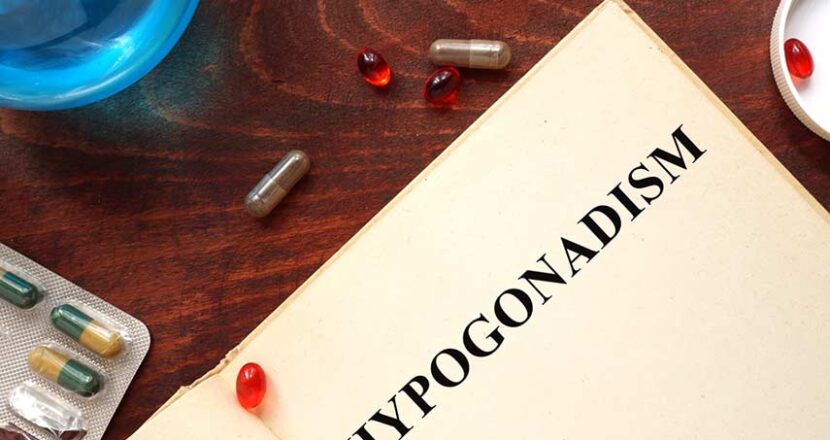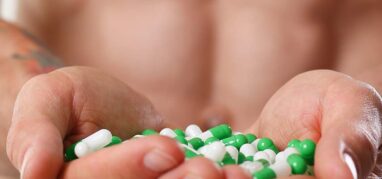Hypogonadism refers to the diminished functional activity of gonads (testes in men and ovaries in women) that may result in decreased synthesis of sex hormones. Basically, hypogonadism occurs when sex glands do not produce sufficient amounts of sex hormones and it induces various symptoms. Hypogonadism is not uncommon among men and throughout this post, you are going to learn more about this subject.
What is Male Hypogonadism?
Male hypogonadism is defined as a condition wherein the body does not produce enough hormone testosterone. According to one study, the prevalence of hypogonadism in men reporting to primary care offices is about 38.7%, but rates could be higher if we bear in mind there are numerous unreported cases, particularly if men do not see their healthcare providers regarding the symptoms they experience. Some men are born with hypogonadism while others develop it later in life e.g. puberty or adulthood.
All cases are linkedto numerous symptoms. For example, lower levels of testosterone usually lead to the absence of secondary male characteristics and other symptoms which you can find further in the article. Two distinctive types of male hypogonadism have been identified: primary and secondary. Causes of this condition depend on the type.
Primary Hypogonadism
Also known as a primary testicular failure, primary hypogonadism occurs due to problems in the testicles. This condition can lead to endocrine failure that causes testosterone deficiency. Some of the most serious consequences of primary testicular failure include impaired spermatogenesis and, eventually, infertility.
The most common causes of this condition include:
- Chemotherapy – It can interfere with production of both testosterone and sperm
- Hemochromatosis – This happens due to abnormally high amount of iron in the blood. Consequences of this condition include testicular failure or pituitary gland dysfunction
- Injury – While injury to testicles can lead to hypogonadism, having one testicle injured usually does not have a negative impact on production of testosterone
- Klinefelter’sSyndrome – Occurs due to a congenital abnormality of the sex chromosomes X and Y. Men usually have one of each, but those with this syndrome have two or more X chromosomes along with one Y. This additional X chromosome leads to abnormal development of testicles and results in low production of testosterone
- Mumps Orchitis – This is the mumps infection that affects your salivary glands, but if it also includes testicles it can cause long-term damage and negatively affect testicular function
- NormalAging Process – It is natural for testosterone production to decline as you age
- Undescended Testicles – This happens when one or both testicles don’t descend at birth. During first few years of a boy’s life, this condition can correct itself. It testicle still doesn’t descend it can lead to malfunction of testicles

Secondary Hypogonadism
According to the paper from the Journal of Advanced Pharmaceutical Technology and Research, secondary hypogonadism is a condition where testicles are normal, but they don’t function properly due to a problem in the hypothalamus or the pituitary gland.
The most common causes of this condition include:
- HIV/AIDS – leads to hypogonadism by affecting testes, hypothalamus, and pituitary gland
- Inflammatory Disease – These include tuberculosis, sarcoidosis, Histiocytosis, and other conditions that involve hypothalamus and pituitary gland in a way to affect testosterone production
- KallmannSyndrome – Abnormal development of hypothalamus
- Medications – use of hormones and opiate painkillers can lower the production of testosterone
- Obesity – It has the potential to cause hypogonadism, at any age
- Pituitary Disorders – They impair the release of hormones from the pituitary gland to the testicles, thus disrupting testosterone production
Symptoms of Male Hypogonadism
As shown above, male hypogonadism can be present at birth, in puberty, or adulthood. Symptoms of this condition depend on when you, actually, develop it. Here is the basic rundown.
Fetal development
- Ambiguous genitals (neither male or female)
- Female genitals (due to lack of testosterone, the growth of external sex organs is impaired)
- Underdeveloped male genitals
Puberty
- Absence of “manly” deepening voice
- Decreased growth of body hair
- Excessive growth of arms and legs compared to the trunk of your body
- Gynecomastia (development of breast tissue)
- Impaired growth of testicles and penis
- Reduced development of muscle mass
Adulthood
- Infertility
- Erectile dysfunction
- Osteoporosis (loss of bone mass)
- Gynecomastia
- Decreased muscle mass
- Reduced body hair and beard growth
- Difficulty concentrating
- Low sex drive
- Fatigue
It is not uncommon for men to gain weight or become irritable due to low levels of testosterone.

Diagnosis and Treatment
Detecting hypogonadism early can prevent various complications. That’s why it is important to see your doctor (or take your child) if you notice symptoms mentioned above. The doctor will perform a physical exam to ensure your muscle mass, pubic hair and other factors of sexual development are consistent with your age.
In addition to the physical exam, your doctor will also order blood tests to inspect testosterone levels. If tests confirm low testosterone, the next step is to find out whether a patient has primary or secondary hypogonadism i.e. whether the condition occurs due to problems with testicles or pituitary gland. In order to do so, your physician will order tests such as testicular biopsy, hormone testing, semen analysis, genetic studies, and pituitary imaging.
When it comes to boys with hypogonadism, doctors usually recommend testosterone replacement therapy to promote puberty and stimulate the development of secondary sex characteristics such as penis growth, bigger muscle mass, masculine voice, pubic hair and beard growth, just to name a few. If the pituitary gland is the problem, pituitary hormones are used to stimulate the growth of testicles.
For men, one way of treating hypogonadism is through hormone replacement or pituitary hormones, depending on the cause of the condition. Assisted reproduction is also one of the therapies recommended for men who want to have children.
Also, having a healthy lifestyle can be of huge help. This means that you should exercise regularly, eat a well-balanced diet, ditch smoking and limit (or avoid) drinking alcohol.
Also See: Do Overweight Men Have Smaller Penis?
Conclusion
Male hypogonadism is quite common and it refers to the lower production of testosterone due to either testicular failure or problems associated with hypothalamus and pituitary gland. The condition can develop in different stages, some men are born with it while others develop later. Early detection is the best way to manage symptoms and prevent complications that could include infertility in adult men.









 This article changed my life!
This article changed my life! This article was informative.
This article was informative. I have a medical question.
I have a medical question.
 This article contains incorrect information.
This article contains incorrect information. This article doesn’t have the information I’m looking for.
This article doesn’t have the information I’m looking for.